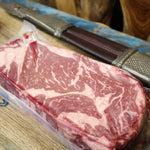
Chapter 6: The New World and Cattle Trails: Beef's Frontier Journey
Embarking on a more detailed exploration, this chapter delves deeper into the intricacies of cattle ranching in the New World, the challenges faced along cattle trails, and the enduring legacy that has shaped the modern beef industry.
Frontier Beginnings: Cattle Ranching in the New World
The roots of cattle ranching in the New World run deep, intertwining with the ambitions of European settlers. As they established themselves in the Americas, the vast open landscapes proved ideal for cattle to thrive. Mexico, Texas, and the expansive Pampas of Argentina became the epicenters of this frontier-era cattle ranching, with ranches stretching across horizons, marking the beginnings of a beef revolution.
The cattle that roamed freely in these untamed lands not only multiplied but also adapted to the diverse environments, contributing to the genetic diversity of beef cattle—a legacy still seen in the varieties of cattle breeds today.
The Cattle Trails Era: Moving Beef to Market
The surge in demand for beef in rapidly growing populations necessitated an efficient way to transport cattle from ranches to markets. This gave rise to the establishment of iconic cattle trails, intricate networks of routes that spanned thousands of miles. The Chisholm Trail, etching its way through Texas, epitomized the challenges and triumphs of driving cattle to railheads in Kansas.
The cattle drives, often romanticized, were a monumental feat of human and animal endurance. Cowboys, facing unpredictable weather, natural obstacles, and conflicts with indigenous populations, became central figures in this narrative, illustrating the grit and determination required to drive cattle across the expansive frontiers.
Boomtowns and Beef Barons: Economic Impact
As cattle trails reached their destinations, typically railhead towns, the economic impact reverberated across the New World. Boomtowns sprung up along the routes, each serving as a pivotal hub in the beef trade. Entrepreneurs, colloquially known as beef barons, emerged as influential figures in this economic frontier. The likes of Charles Goodnight and John Simpson Chisum not only amassed significant fortunes but also left an indelible mark on the trajectory of the beef industry.
The economic boom associated with the cattle trails spurred innovations in various sectors. Railroads expanded, facilitating the transportation of cattle more efficiently. New technologies, such as the widespread use of barbed wire, addressed challenges faced along the trails and reshaped the landscape of ranching.
Challenges on the Trail: Nature, Conflict, and Innovation
The trails were fraught with challenges, both natural and man-made. Severe weather conditions, river crossings, and encounters with predators posed constant threats to both cattle and cowboys. Conflicts with indigenous populations, rooted in historical tensions over land, added an additional layer of complexity to the cattle drives.
In response to these challenges, innovations were born. Barbed wire, a seemingly simple invention, revolutionized ranching by providing an effective means of fencing, preventing cattle from straying and reducing conflicts with neighboring ranchers.
Legacy of the Trails: Shaping the Modern Beef Industry
While the era of cattle trails eventually gave way to railroads and evolving ranching practices, its legacy endures. The romanticized image of the cowboy, the vast landscapes dotted with cattle, and the economic foundations laid by the trails all played a pivotal role in shaping the modern beef industry.
The streamlined journey from pasture to plate, once a perilous trail ride, became an integral part of the global beef supply chain. The enduring legacy of the cattle trails lives on in the collective imagination, a testament to the resilience, innovation, and transformative journey of beef in the ever-expanding landscapes of the Americas.



